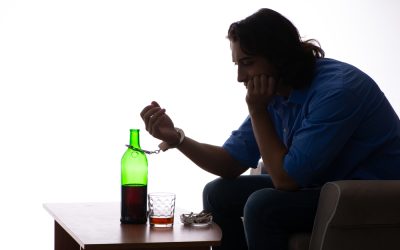Use, Abuse, and Dependency: Understanding the Addiction Process NCBI Bookshelf
That is why professional treatment is always recommended, no matter whether a person is dependent on a drug or has a full-blown addiction to it. A substance use disorder, or SUD, is a mental health disorder that develops after prolonged substance abuse. It changes how the brain functions and impairs how a person behaves as addiction vs dependence a result. A person who has a substance use disorder prioritizes seeking and using the drug above all else, and may act irrationally when they do not have the drug in their system. Addiction is a chronic disease characterized by drug seeking and use that is compulsive, or difficult to control, despite harmful consequences.
Standard Outpatient Programs

An invited editorial in Nicotine and Tobacco Research explains how insufficient policies at a professional society allowed for industry influence in its journal- which the authors say enable racist industry tactics to persist and evolve. Reporting on those at the other end of the human spectrum, a study published in the March 13, 1996, issue of JAMA projected a 50 percent increase in the number of elderly alcoholics by the year 2000. The study blamed the rise on the large number of people who would begin turning 65 at the end of the century. In a paper written for Training about Alcohol and Substance Abuse for All Primary Care Physicians, published in 1995 by the Josiah Macy, Jr. Foundation, Kathleen Brady, M.D., Ph.D., noted that African-American men are less likely to drink alcohol than white men, whereas the opposite is true for women.
Partial Hospitalization Programs (PHP)
For some substances, such as alcohol, suddenly stopping it can be dangerous. In these cases, treatment involves gradually tapering off the drug over a set period to reduce withdrawal effects. Results from NIDA-funded research have shown that prevention programs involving families, schools, communities, and the media are effective for preventing or reducing drug use and addiction. Although personal events and cultural factors affect drug use trends, when young people view drug use as harmful, they tend to decrease their drug taking. Therefore, education and outreach are key in helping people understand the possible risks of drug use. Teachers, parents, and health care providers have crucial roles in educating young people and preventing drug use and addiction.
Substance Abuse
Detoxification is not always needed—this depends on the extent of the withdrawal symptoms upon stopping drug abuse. In near every case of substance use disorders, however, therapy and education is an important step towards recovery. Addiction is characterized by an inability to stop using a substance, despite the harmful consequences. A person who is addicted typically struggles to meet work, social, and/or family obligations.
- Dependence and abuse are defined in a way that measures the time and severity of substance use.
- Future research should clarify the role of emotional states (moderating or mediating effects) in the impact of childhood adversity on addictive behavior.
- Yet because the terms are used interchangeably, the line between them often gets blurred.
- The two conditions often occur at the same time, but a person can be dependent on a substance without being addicted to it.
- Substance use disorder, on the other hand, is used in clinical and diagnostic settings to refer to “addiction.” The condition also has varying levels of severity and is categorized as mild, moderate, or severe.
- As a person continues to use drugs, the brain adapts by reducing the ability of cells in the reward circuit to respond to it.
Mental Dependence Vs. Physical Dependence
Women and drugs: health and social responses – European Monitoring Centre for Drugs and Drug Addiction (EMCDDA)
Women and drugs: health and social responses.
Posted: Wed, 08 Mar 2023 08:00:00 GMT [source]
This is where dependency can turn into full-blown addiction—when substance abuse becomes the all-encompassing main priority. Fortunately, Volkow and her colleagues’ argument carried the day with the American Psychiatric Association’s DSM-5 committee in 2013. …resulted in confusion among clinicians regarding the difference between “dependence” in a DSM (IV) sense, which is really “addiction,” and “dependence” as a normal physiological https://ecosoberhouse.com/ adaptation to repeated dosing of a medication. The result is that clinicians who see evidence of tolerance and withdrawal symptoms assume that this means addiction, and patients requiring additional pain medication are made to suffer. Similarly, pain patients in need of opioid medications may forgo proper treatment because of the fear of dependence, which is self-limiting by equating it with addiction (764–765) [6].

Different Parts of the Brain Affected

How to Determine if You are Dependent or Addicted
- Some people develop physical dependencies on a drug while others only develop a psychological (aka mental or emotional) dependence.
- At first, starting this behavior is an extra activity, but as the user becomes more dependent on the high, it can turn into the main activity.
- Fortunately, Volkow and her colleagues’ argument carried the day with the American Psychiatric Association’s DSM-5 committee in 2013.
- It could include prescription drugs, over-the-counter products, street drugs, alcohol, even nicotine.
- Jonathan N. Stea, Ph.D., R. Psych, is a registered and practicing clinical psychologist in Calgary, Alberta, Canada, and adjunct assistant professor at the University of Calgary.




